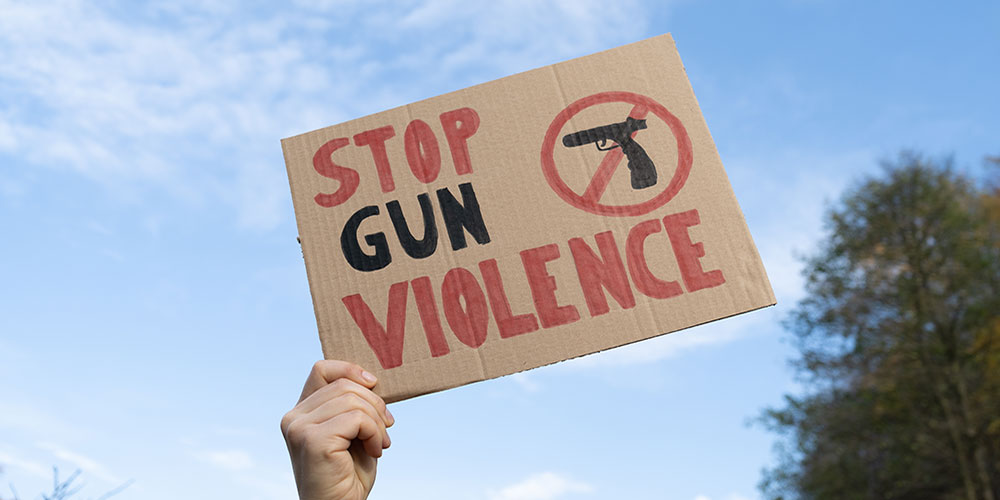Note: The views expressed by guest bloggers and contributors are those of the authors and do not necessarily represent the views of, and should not be attributed to, Campus Safety.
Lately, every school day is feeling like National Gun Violence Awareness Day. While this year marks the 10th anniversary since the official formation of the day of recognition, which has since become a month-long commemoration, the rise in gun violence continues to escalate. As this article is being written, in 2023 there have been at least 64 incidents of gunfire on school grounds, resulting in 22 deaths and 46 injuries nationally, according to Everytown Research & Policy.
The numbers are daunting. The anxiety is palpable. The loss is devasting.
The growing threat and long-term impact of gun violence in schools can quickly change the classroom as we currently know it – as early as this coming September.
An April 2023 survey of educators found that four out of 10 teachers are considering quitting because they don’t feel safe at work. Of those, 82% would like to change jobs within the next six months.
The report, “Gun Violence in America: The Impact on Educators,” also brought forth other concerns. A staggering nine out of 10 educators believe their chance of encountering an active shooter at work has increased over the past 12 months. This is not paranoia. Over the past six months, 27.4% of teachers said a threat was made by a student, and 21.7% reported a gun being brought into school. Further, one in three said they have experienced a shooting at work.
These findings highlight a need for us, as a country, to do better for our educators. Unfortunately, we haven’t equipped schools to deal with the anxiety, fear, and trauma students are bringing into the classroom. As a result, teachers – most of whom haven’t been trained in mental health – are bearing the burden of what has become a national health crisis.
4 Actions Schools Can Take to Improve Safety
We don’t need to feel helpless or hopeless in reducing and ultimately eliminating the threat of gun violence in schools. Here are four actions schools can take to keep students, teachers, and the entire school community safer.
1. Apply a multi-layered approach to school safety
This strategy looks at all facets of safety while recognizing there isn’t one single action that will keep a school safe. Instead, it’s a three-tiered approach comprised of both small steps and big actions to help lower risk.
The first step, prevention, establishes an atmosphere of safety by instituting ongoing training, regular safety drills, and continuously refining safety plans. The second tier is mitigation. Key stakeholders are regularly trained in identifying and responding to threats. The third tier encompasses communicating with students, especially those most vulnerable that are often overlooked or bullied. It also includes a well-defined plan to communicate with parents and other stakeholders to reduce the risk and, unfortunately, what to do in the event of an incident.
2. Acknowledge that safety is an ongoing priority – and it takes a village
Every school needs a school safety team that includes a mix of stakeholders: administrators, principals, teachers, emergency responders, members of local police and fire departments, and community members such as coaches that are directly involved with the students. Another important yet often overlooked representation on the team is the presence of students. You cannot underestimate the value of a student’s insight into what’s happening in the student body.
3. Establish protocols before an incident occurs
Many schools have established protocols such as regular active shooter drills and what to do when technology flags potential threats posted online or entering a building. While these standard practices are necessary, they need to be part of a larger plan led by the school safety team that prioritizes the following protocols:
- Regularly review the school’s emergency operations plan
- Provide local first responders, police, and fire departments with tours of the school buildings as well as maps with room numbers on them
- Designate a primary contact from the school responsible for communicating with parents, students, media, and the community
- Be prepared to transfer the responsibility of public communications to local law enforcement in the event a crisis becomes a crime scene
4. Involve teachers and students in the process
By default, teachers are involved in school safety. Yet they shouldn’t feel like they are shouldering the entire burden. Teachers are an integral part of the school safety team in providing insight and following protocols while the responsibility of keeping guns out of schools is led by key stakeholders in the school and community.
Having students involved in school safety may seem counterintuitive. However, the overwhelming majority of students want to be safe at school. When they are involved in safety decisions, they feel empowered and will do more to make safety a priority. Not to mention the added benefit of positive interactions with local law enforcement.
With the school year over, now is the time for those responsible for school safety to carefully evaluate if they’re ready for the fall or if it’s time to make immediate changes.
Kevin Eberle, EdD., is an education advisor/consultant to Evolv Technology and retired police officer, principal, and Chief Operating Officer at Buffalo Public Schools:













